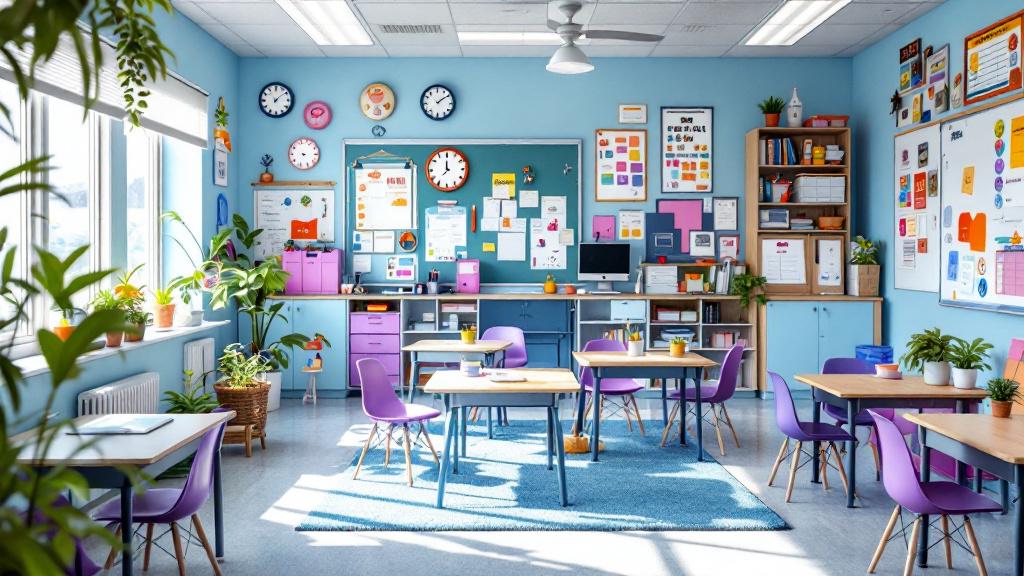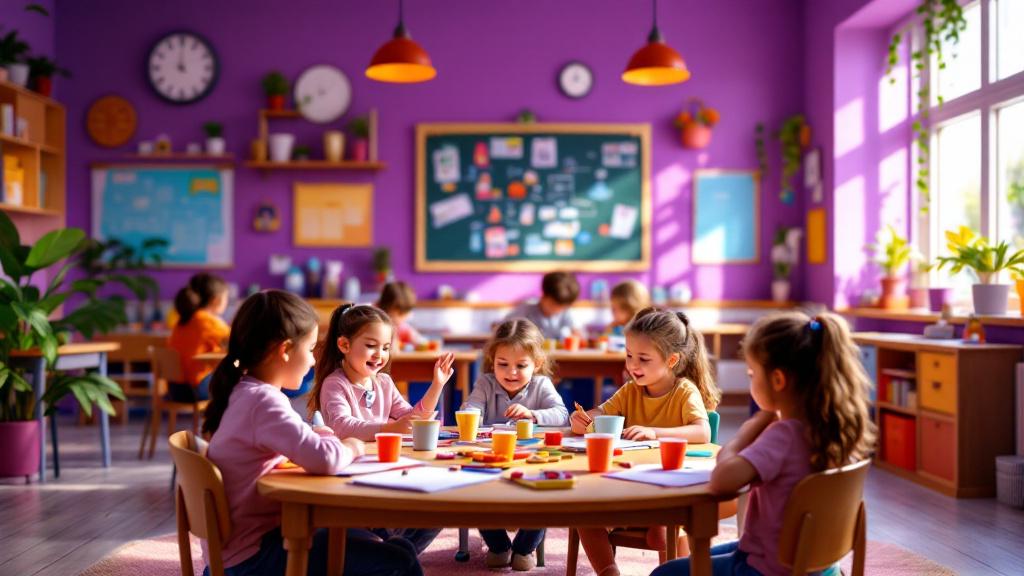The Power of a Positive Morning Routine
A well-structured morning routine sets a crucial foundation for children's school readiness, influencing their mood, behavior, and ability to learn. Establishing consistent, engaging, and age-appropriate activities helps children transition smoothly into the school day while fostering independence and responsibility. This article explores comprehensive strategies to create effective morning routines that support children's development and set the tone for successful learning.
Establishing a Clear and Consistent Routine

Why is forming a stable routine important for children?
A consistent routine in the mornings provides children with a sense of security and predictability. When daily activities occur in a familiar pattern, children feel more confident and less anxious about starting the day. This stability helps reduce stress and emotional meltdowns, making mornings smoother for everyone involved.
Children with structured routines tend to transition better into school activities. They also develop important self-help skills like dressing themselves and packing their belongings independently. Over time, routines foster responsibility and improve behavior, laying a strong foundation for lifelong time management skills.
How can parents create a structured morning schedule?
Developing a routine that is both realistic and manageable is essential. Start by establishing a wake-up time that allows ample time for all activities, ideally giving children between 45 minutes to an hour before leaving for school. Incorporate vital tasks such as waking up, hygiene routines, breakfast, dressing, and final checks.
Preparing for the next day the night before can significantly ease morning chaos. This preparation might include packing lunches, laying out clothes, organizing backpacks, and setting up a command center where essentials are stored. Using timers for each task can help children stay focused and on schedule.
Keeping things simple—such as choosing quick, nutritious breakfasts like smoothies or overnight oats—helps ensure the morning is not rushed. Keeping the environment calm and free from distraction, such as screens or loud noise, further supports a smooth routine.
How can visual aids help children follow routines?
Visual aids like pictorial charts or checklists are powerful tools, especially for younger children. For children under 5, picture-based charts that depict each step in the morning routine—like brushing teeth, getting dressed, or packing the bag—can help them follow along independently.
For children aged 6 to 8, combining words with pictures enhances understanding and retention. These visual schedules can be posted in a prominent place and reviewed regularly, encouraging children to take ownership of their responsibilities.
Creating a morning routine chart that involves children in its design can foster independence and cooperation. Incorporating bright colors and fun visuals makes following the routine feel less like a chore and more like an engaging activity.
Practical tips to implement effective routines
- Set consistent bedtimes and wake-up times that meet sleep recommendations: children aged 6-13 should get 9-11 hours, while teenagers aged 14-17 need 8-10 hours.
- Prepare the night before to minimize morning decision-making and rush.
- Keep routines simple and step-by-step using visual aids for all age groups.
- Use timers or alarms to keep activities on track.
- Involve children in planning to increase their sense of control.
- Add enjoyable elements like music, positive affirmations, or a quick morning game.
- Establish a calming environment by avoiding screens and establishing a peaceful setting.
By focusing on these practices, families can create a morning routine that is not only effective but also enjoyable, setting the stage for a successful day.
| Aspect | Strategy | Details |
|---|---|---|
| Purpose | Provide stability | Reduce anxiety, foster independence |
| Planning | Night-before prep | Packing lunches, laying out clothes |
| Visuals | Use charts | Help young children follow steps |
| Timing | Set routine durations | 45 mins to 1 hour, include buffers |
| Positive environment | Keep mornings calm | Limit electronics, include connection activities |
| Flexibility | Regular review | Adjust routines as needed |
Creating a morning routine suited to your child's needs takes patience and consistency. Over time, these practices help cultivate a calm, organized start every day, fostering confidence and readiness for school life.
Supporting Children's Independence and Motivation

How can parents encourage children to participate in morning routines?
Getting children involved in their morning routines fosters independence and motivation. Parents can use engaging strategies to make these activities enjoyable, such as turning tasks into fun mini-games or friendly competitions. For instance, timing how quickly each task is completed or singing a favorite song while getting dressed can add a positive touch.
Involving children in planning their routines also helps them feel a sense of ownership. Giving choices—like selecting their outfit, breakfast options, or the order of tasks—can motivate children to cooperate willingly. Using visual checklists or charts that display step-by-step actions, tailored for their age, reinforces understanding and independence.
Consistency is vital. Establishing regular routines, celebrating small achievements with praise or rewards, and providing positive feedback builds confidence. Preparedness the night before—such as packing backpacks, choosing clothes, and setting out shoes—reduces morning chaos and encourages children to take responsibility.
Connecting through calm interactions, like sharing a quick chat or a gentle hug before heading out, creates a positive environment that motivates children to participate actively. Using timers can help children stay focused and feel a sense of accomplishment as they complete each step.
Ultimately, making morning routines predictable, fun, and inclusive leads to smoother mornings. Children who practice independence from an early age develop important self-help skills, cultivate responsibility, and start each day with confidence, laying a strong foundation for their overall growth.
Age-Appropriate Activities to Foster School Readiness

What are age-appropriate morning activities that prepare children for school?
Age-appropriate morning routines are vital in helping children feel confident and prepared for their day at school. For young children aged 3-5, establishing a consistent routine that includes waking up early, engaging in personal hygiene, and practicing independence can make mornings smoother. Simple activities like making their beds, brushing teeth, and dressing in school clothes foster responsibility. Incorporating engaging activities such as calendar math, class theme songs, and morning messages can help children adjust to the classroom environment and reinforce foundational learning. Fun, low-effort games like puzzles, matching activities, or dot-to-dot exercises not only develop fine motor skills and visual discrimination but also make mornings enjoyable. Mindfulness exercises, through tools like GoNoodle, help children focus and start the day with a positive attitude. Advanced planning of routines, positive reinforcement, and encouraging independence are essential for reducing morning stress and establishing a productive start to the school day.
How can visual aids enhance morning routines for different age groups?
Visual aids serve as powerful tools to clarify expectations and promote independence during morning routines. For children under 5, picture charts with clear images representing activities like brushing teeth, dressing, and packing backpacks help them understand each step. These visual cues reduce confusion and anxiety, enabling young children to follow routines with less parental intervention. For children aged 6-8, combining pictures with words provides additional support for understanding schedules and responsibilities. Visual routines assist these children in managing their time and responsibilities more independently. When children can check off tasks on a visual chart, it fosters a sense of accomplishment and responsibility. Incorporating visual aids into morning routines creates a structured environment that encourages self-help skills. It also builds confidence as children recognize their progress and become more autonomous, setting a positive tone for the rest of their day.
Creating a Supportive Morning Environment
 Designing a calm and organized space for your child's morning activities can significantly boost their readiness and confidence. A dedicated area—often called a command center—helps keep essential items like backpacks, lunchboxes, and school supplies in one easily accessible spot. This arrangement reduces last-minute searches and minimizes morning chaos.
Designing a calm and organized space for your child's morning activities can significantly boost their readiness and confidence. A dedicated area—often called a command center—helps keep essential items like backpacks, lunchboxes, and school supplies in one easily accessible spot. This arrangement reduces last-minute searches and minimizes morning chaos.
Managing distractions is equally important. Limiting or removing electronic devices such as phones, tablets, and TVs in the mornings helps children stay focused on their routines. Technology can lead to delays and distract kids from completing necessary tasks efficiently. Instead, opting for gentle background music or natural sounds can create a peaceful atmosphere that encourages calmness.
Involving the whole family in creating and maintaining routines fosters a sense of teamwork. When parents and children share responsibilities—like packing lunches, laying out clothes, or setting a timer—everyone feels more engaged and responsible. Establishing a visual routine chart with pictures or words tailored to your child's age—simple for preschoolers and more detailed for older children—serves as a helpful reminder of daily steps. This visual aid encourages independence and allows children to master their morning tasks with less parental oversight.
In summary, an organized space, distraction management, and family involvement are crucial to cultivating a morning environment that is tranquil, efficient, and enjoyable. Such an environment nurtures positive habits, reduces stress, and sets a confident, prepared tone for the day ahead.
Making Mornings Enjoyable and Motivating

How can routines be made enjoyable to motivate children?
Transforming morning routines into positive and engaging experiences can foster motivation and cooperation from children. One effective approach is to incorporate cheerful music, which can energize children and set a lively tone for the day. Playing favorite songs during activities like getting dressed or brushing teeth makes these tasks more fun and less like chores.
Adding small incentives, such as stickers or praise, provides encouragement and creates a sense of achievement. Celebrating small successes reinforces positive behavior and helps children feel proud of their independence.
Connecting activities also boost mood. For instance, sharing a cuddle, reciting affirmations aloud, or exchanging kind words can strengthen emotional bonds and create a warm start to the day.
Turning routine chores into games or friendly challenges can motivate children to participate willingly. For example, timing how fast they can put on their shoes or brushing teeth to the rhythm of a song turns mundane tasks into enjoyable activities.
The 'We-Then' method, where children complete less liked tasks before engaging in preferred activities, encourages them to follow through and feel accomplished.
Using visual aids, such as charts or stickers, helps children see their progress and stay on track. Small rewards for completing routines—like extra storytime or choosing a breakfast favorite—further motivate children.
Creating a positive morning environment through these strategies not only makes routines more enjoyable but also promotes independence and confidence. When children look forward to mornings, they start the day with enthusiasm and a positive attitude.
Building Foundations for Lifelong Success
Incorporating these strategies to build positive morning routines can create a calm, structured, and joyful start to each day. When children wake up to predictable and engaging activities, they develop independence, responsibility, and emotional resilience—all vital skills for school success and lifelong growth. Parents and caregivers who prioritize consistency, positivity, and involvement foster an environment where children feel confident, ready, and excited to learn. With patience and regular practice, a strong morning routine not only simplifies mornings but also builds habits that contribute to children’s overall development and happiness.
References
- Morning routine for school: practical tips | Raising Children Network
- Stress-Free School Morning Routine Checklist for Kids 3–8 Years Old
- How to Create a Successful School Morning Routine - SHK
- Morning Routines for Kids That Will Make Life Easier! - OT Perspective
- How to Create a Back-to-School Morning Routine That Works
- 6 Steps to Master a School Morning Routine for Kids - The Zebra
- Crafting the Perfect Before-School Morning Routine for Kids





































































































